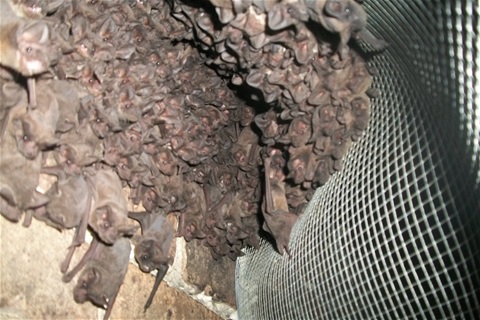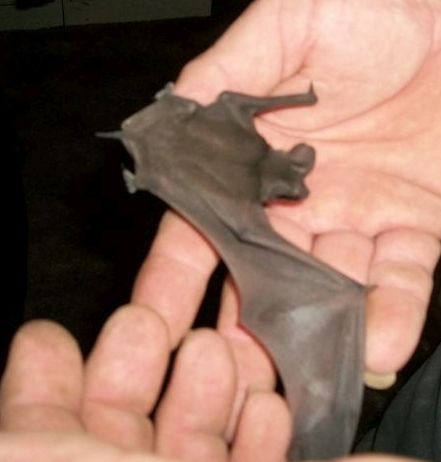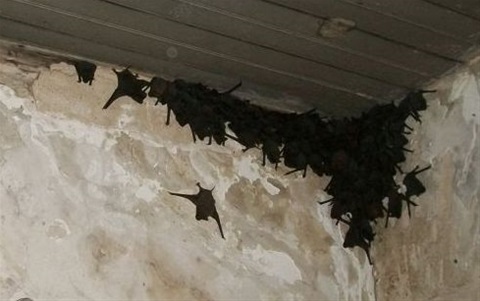Welcome to my bat page.
I would like to take the time to introduce you to the bats you may see here in North Carolina. We have at least 17 species of bats here. Not one of these 17 are blood suckers! None of them prey on human flesh, nor will any of these 17 will hypnotize you with an icy stare. None will turn you to stone with a glance.
They are small and timid creatures with a natural fear of man and they will not dive bomb you, at least not on purpose. And they absolutely, positively, for sure DO NOT want to get caught in your hair!
They are bug eaters! They consume half to two thirds of their own body weight in bugs every night. A nursing female will consume her entire body weight in bugs each night as she needs more to produce milk to feed her offspring. So if you have a colony of 100 or more skittering around each night, THAT’S A LOT OF BUGS!
Bats represent one-quarter of all mammal species worldwide. Like us, they give birth to live young. Bats are relatively long-lived mammals and can survive 20 to 30 years in the wild. Of the 17 bat species that occur in North Carolina, three are listed as federally Endangered and one is listed as federally Threatened.
Bats are primarily nocturnal, though they also forage in the early evening and early morning hours. Although most bats have relatively good eyesight, they primarily use echolocation to navigate and locate prey. Their maneuverability is phenomenal—bats can avoid objects as small as a string in total darkness.
Bats mate in the spring or fall and usually produce one pup per year. Many species form maternity colonies in the summer to raise their young, while others are solitary roosters.
Some bat species migrate south for the winter and others find local hibernation areas, called hibernacula, for the winter. Bats prefer caves or mines for hibernacula, though they have also been known to use buildings and bridges, and they usually return to the same site every year.
By educating the public, monitoring populations, and protecting bat habitat, the North Carolina Wildlife Resources Commission (NCWRC) is working to sustain bat populations in our state.
The Benefits of Bats
Bats are integral to ecosystems worldwide. Tropical bats disperse large amounts of seed and pollen, enabling plant reproduction and forest regrowth, and are especially important in the pollination of cocoa, mango, and the agave plant, which is used to produce tequila. North American bats have a major impact on controlling insect populations that are considered agricultural pests. They save the corn industry over $1 billion annually in pest control. Recently a protein found in vampire bat saliva has been used to develop clot-busting medication to aid stroke victims.
Page still under construction.
More to come.



Latest comments
There is none. All that's mentioned is "native" wildlife and there are tons or restrictions there.I think there needs to be more restrictions on exotic pets just makes good sense.http://onedaytop.com/
Howdy, Mike! Welcome to my web site!
I've checked the regulations for some mention of exotics. There is none. All that's mentioned is "native" wildlife and there are tons or restrictions there.
I think there needs to be more restrictions on exotic pets just makes good sense. If allowed only qualified people with proper facilities shold be able too .But dont understand why I cant gig frogs!